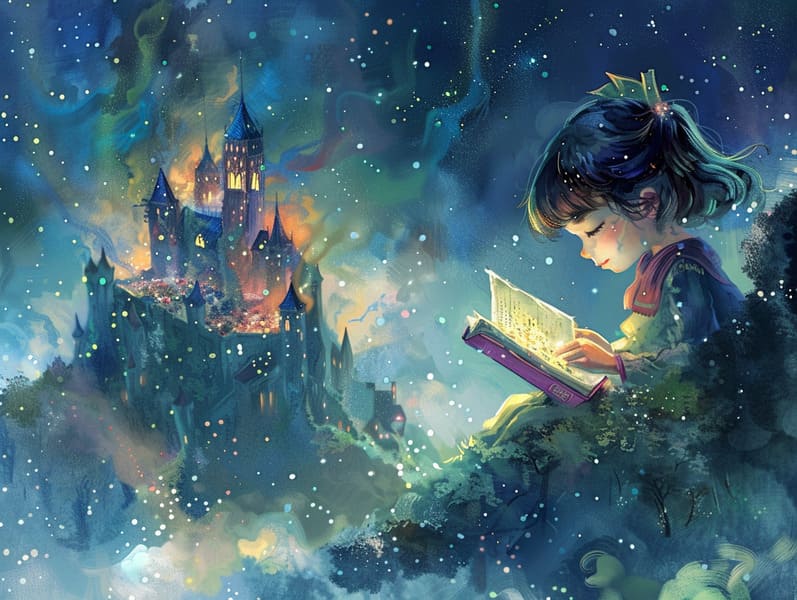The Inception of Vintage Fairy Tales and Their Unfading Radiance.
The Inception of Vintage Fairy Tales and Their Unfading Radiance.
Blog Article

Traditional fairy tales have deep roots. These tales have been passed down from one generation to the next millennia before they were ever written down. They came from a variety of backgrounds, including Middle Eastern traditions. They were initially told among grown-ups, often carrying themes and messages relevant to the societal norms and beliefs of the time.
The Brothers Grimm, Jacob and Wilhelm, were among the first to gather many of these beloved stories. Their compilation, "Grimm's Children's Stories," included tales like "The True Bride," "Hansel and Grethel," and "Snow-White and Rose-Red," which have since become pillars in the world of famous fairy tales. Similarly, Hans Andersen's fanciful tales, such as "The Sea Maid," and "The Little Duckling," have captured hearts worldwide, solidifying their place in the pantheon of treasured fairy tales.
Despite their historical roots, classic fairy tales remain as applicable as ever, especially as children's bedtime stories. These magical stories are now available in numerous formats, including vividly illustrated books, whimsical animations, and online storybooks.
Their persistent charm can be ascribed to several whimsical characteristics:
Significant Morals: Traditional fairy tales often offer important moral lessons. Fairy tales like "The Boy Who Cried Wolf" teach the importance of being truthful, while "The Race of the Tortoise and the Hare" underline the values of resolve and modesty. These narratives offer children clear distinctions between ethical and unethical, helping to shape their moral compass in a mild yet important way.
Compassion and Knowledge: Classic fairy tales frequently include protagonists facing obstacles and hardships, inspiring readers to empathize with their struggles and cheer for their triumphs. For instance, "Beauty and the Beast" conveys the significance of valuing inner qualities to understand the real person of a individual, fostering sympathy and comprehension.
Cultural Awareness: Many old fairy tales are rooted in the cultural contexts from which they developed. Learning from these narratives can provide delightful insights into different beliefs, nurturing a sense of cultural understanding and comprehension.
Imagination and Innovation: The imaginative elements in fairy tales—enchanted objects—encourage children’s visions. These narratives transport readers to otherworldly realms, inspiring inventive ideas and a sense of enchantment that stays a lifetime.
Classic fairy tales are not only fascinating but also educational. They work as delightful tools in nurturing various brain and heart skills in children. When ancient fairy tales are narrated, they improve language development by presenting new terms and elaborate sentence structures. This practice also nurtures listening skills and attention span, as little ones keep up with the story, ready to see what happens next.
Furthermore, talking about the themes and characters of fairy tales can enhance critical thinking and thought processes. Children are shown to discover patterns, expect results, and understand cause and effect. These contemplations also further children communicate their thoughts and feelings, contributing to their emotional intelligence.
In today’s technological era, the existence of online fairy tales has made these tales more available than ever. Internet sites and applications share large libraries of old fairy tales that can be read or heard anytime, anywhere. Fairy tales narrated are particularly well-received, making available an interactive way for young ones to appreciate these enchanting tales. Sound books and read-to-me videos bring characters and settings to life, often joined by magical soundtracks and background music that augment the tale journey.
The everlasting appeal of old fairy tales lies in their ability to adjust to modern society while holding onto their central messages. Contemporary reimaginings of these narratives often highlight more different characters and modern settings, making them meaningful to today’s audience. However, the key lessons of braveness, understanding, and rightness remain unchanged, continuing to resonate with readers of all ages.
Classic fairy tales also offer a sense of contentment and recognition. They afford a structured narrative with a transparent beginning, middle, and end, often drawing to a close with the termination of conflicts and the triumph of virtue over corruption. This constancy can be easing for kids, imparting a sense of solidity in an inconstant world.
Timeless fairy tales continue to bewitch and teach new generations, maintaining their splendor and applicability in modern society. As bedtime stories for kids, they disclose a perfect blend of captivation and insight, enhancing moral values, empathy, and creativity. The presence of online storybooks and the favor of fairy tales recited validate that these traditional tales remain acquirable to new generations.
By guarding and broadcasting these tales, we continue to pay tribute to the rich tapestry of tradition and cultural heritage. Whether you are discovering a colorful picture book, viewing a digital collection, or hearing an audio story, the delight of children's fairy tales is always within reach. These tales remind us of the ageless effect of stories and its ability to draw us together across eras and regions.
Be it you are seeing a gorgeously illustrated book, seeing a web-based collection, or hearing an audiobook, the enchantment of traditional fairy tales is always within reach.
These fairy tales illustrate of the eternal impact of fairy tales and its check it out ability to unify us across eras and regions, creating a bond that charms and informs alike.